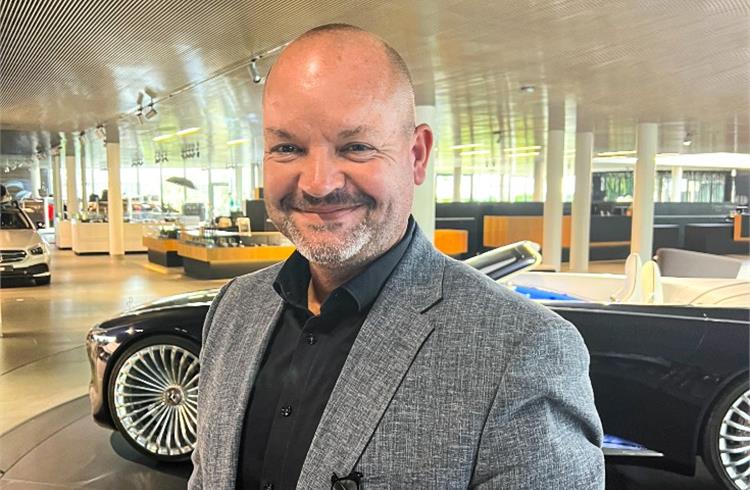‘CKD plants like India’s help us learn flexible manufacturing’
Jörg Burzer, global head of production and supply at Mercedes says that with plants having to produce both ICE and EVs, CKD facilities that assemble a wide variety of vehicles are helping it adapt to a flexible production model.
With the eventual move to electric mobility, a big challenge that faces legacy car makers is how and when to switch over their production plants to making electric cars. With markets around the world going electric at different stages – some even a decade later – global carmakers need to produce both ICE vehicles and EVs simultaneously.
The challenge lies in building them together in the same plants as setting up new dedicated electric vehicle facilities is expensive and not ideal for those with existing production facilities. “It costs a couple of million euros to adapt a plant to make both ICE and EVs, but not a couple of 100 million which you would have to spend to build a new plant,” says Jörg Burzer, Executive Vice President, Board Member of Management of Mercedes-Benz AG responsible for Production & Supply Chain Management (pictured). He was speaking to the Indian media at an event in Stuttgart.
Mercedes has begun adapting its plants around the world to be flexible in making different powertrain models together. As Burzer says, its CKD plants like the one in India have helped. “We already had the flexibility in Pune because we are producing a lot of different cars already on the same line. So we have learned a few lessons in production flexibility from CKD plants like these,” adding that “the flexibility in its India operations is even higher because you have SUVs and sedans on the same line which we do not have in our volume production”.
This has helped Mercedes adapt its Factory 56 at Sindelfingen in Germany to a flexible model capable of producing the ICE, hybrid and battery-electric vehicles on one line. This is important as Factory 56 serves more than 100 markets and this flexibility helps Mercedes fulfill their different requirements. Burzer illustrates this point saying that when the European Union goes all-electric in 2035, it will still be manufacturing a ‘very small volume’ of ICE cars for markets that are yet to switch over. However, having said that, the Mercedes production chief is also sure that by 2025 there will be some production facilities that will switch over a hundred percent to EVs.
The challenge beyond production, however, will also be lifecycle management and technology upgradation of the engine itself as these will also have to be updated to meet customer demands, as well as tougher regulations. This could be challenging with small volumes. Clearly then, the switch to electric mobility will not be as easy as throwing a switch.
RELATED ARTICLES
Branded content: HL Klemove inaugurates first Local ADAS Radar Manufacturing Unit in India, marks a significant achievement in “Make in India” initiative
The inauguration ceremony was held in the presence of Vinod Sahay, President and CPO of Mahindra & Mahindra Ltd. and Dr....
BluWheelz to 'Green Up' logistics sector
With their EVs-as-a-service solution, the startup is playing it smart with costs and looking to electrify the entire seg...
BRANDED CONTENT: Spearheading the EV revolution in India
Jio-bp is a joint venture between Reliance Industries and BP PLC where both entities have married international expertis...





 07 Jul 2022
07 Jul 2022
 6242 Views
6242 Views





 Autocar Pro News Desk
Autocar Pro News Desk




